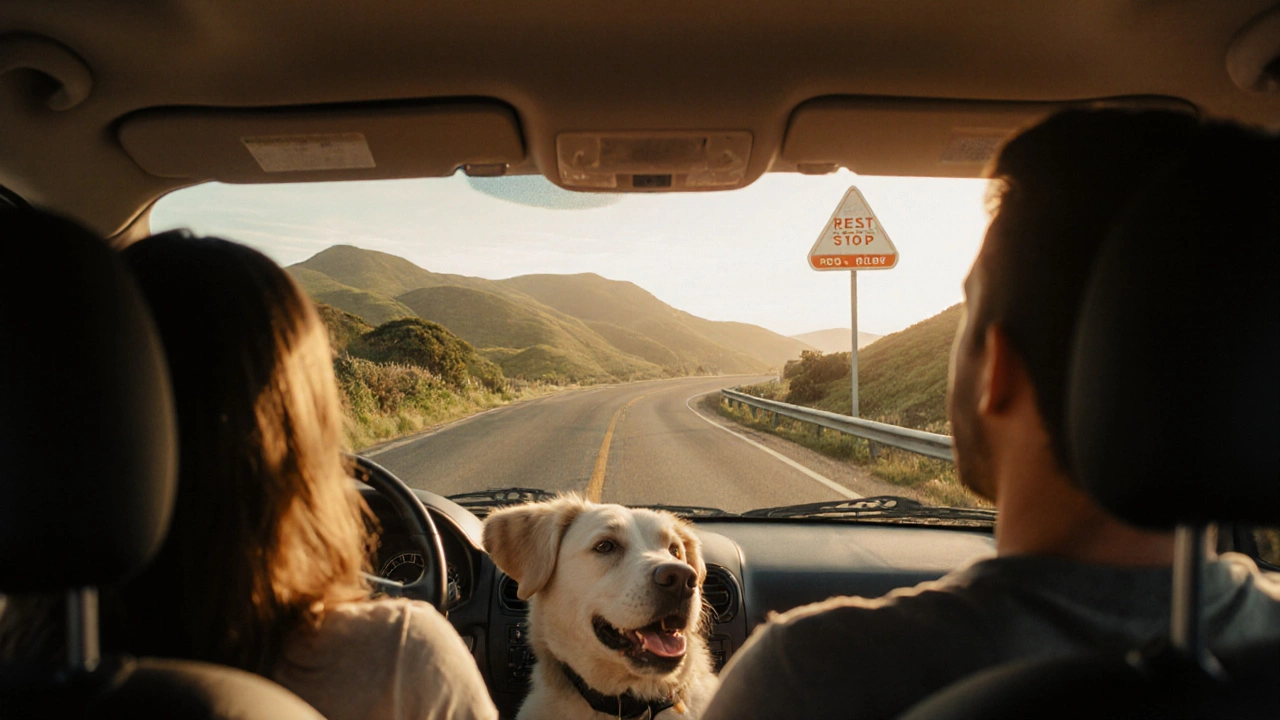Pet Road Trip: Essential Tips, Rules, and What to Pack for a Safe Journey with Your Dog
When you hit the road with your dog, you’re not just taking a pet—you’re planning a pet road trip, a journey where your dog’s comfort, safety, and behavior are just as important as your itinerary. Also known as dog travel, it’s not just about loading the car and going. It’s about knowing where your dog can go, what they can bring, and how to keep them calm when the miles add up. Many people assume if their dog is good at home, they’ll be fine in the car. But that’s not always true. Cars, strange smells, motion, and long hours can trigger stress, nausea, or even panic in dogs that seem perfectly calm otherwise.
That’s why knowing the rules matters. pet carrier size, the exact dimensions airlines and hotels accept for in-cabin pets isn’t just for flying—it’s a key standard even for road trips. Many campgrounds, pet-friendly hotels, and rest stops have strict size limits. And if you’re heading to a beach like Ocean City, MD, or a state park, you need to know ahead of time if dogs are allowed on the sand or just on leashes. dog friendly destinations, places where dogs are welcome without restrictions or extra fees don’t just happen. You find them by checking local rules, calling ahead, and reading recent reviews from other pet owners.
Then there’s the stuff you pack. It’s not just food and water. You need a non-slip mat for the car seat, a portable bowl, waste bags, a leash that won’t tangle, and maybe even a calming supplement if your dog gets anxious. Some owners swear by a familiar blanket or toy to reduce stress. Others use a crate that’s been introduced slowly over weeks, not hours before the trip. And don’t forget the paperwork—vaccination records, microchip info, and emergency contacts. One wrong turn and you could be stuck at a vet’s office far from home.
And what about the stops? Rest areas aren’t always safe for dogs. Some have busy roads, no shade, or no clean water. Plan your breaks around dog parks, pet-friendly gas stations, or places with grassy areas. Never leave your dog alone in the car—not even for five minutes. On a 75-degree day, the inside of a car can hit 110 degrees in 20 minutes. That’s not a risk worth taking.
There are also things you can’t control. A sudden storm, a detour, a noisy highway exit—these can throw off your dog’s routine. That’s why practice matters. Take short drives before the big trip. Let your dog get used to the car, the sounds, the motion. Reward calm behavior. Don’t force them into a carrier if they’re scared. Build trust slowly.
What you’ll find below are real stories and straight-up advice from people who’ve been there. Whether it’s how to handle a dog that vomits on the highway, which airlines actually check carrier sizes at the gate, or why some dog-friendly hotels charge extra even if your dog is quiet—this collection cuts through the noise. No fluff. No guesswork. Just what works.

What Can I Do Instead of Flying with My Pet? Practical Alternatives for Safe Pet Travel
Looking for alternatives to flying with your pet? Discover safe, stress-free options like road trips, professional pet transport, ferries, and pet-sitting services that keep your animal comfortable and secure.
View more